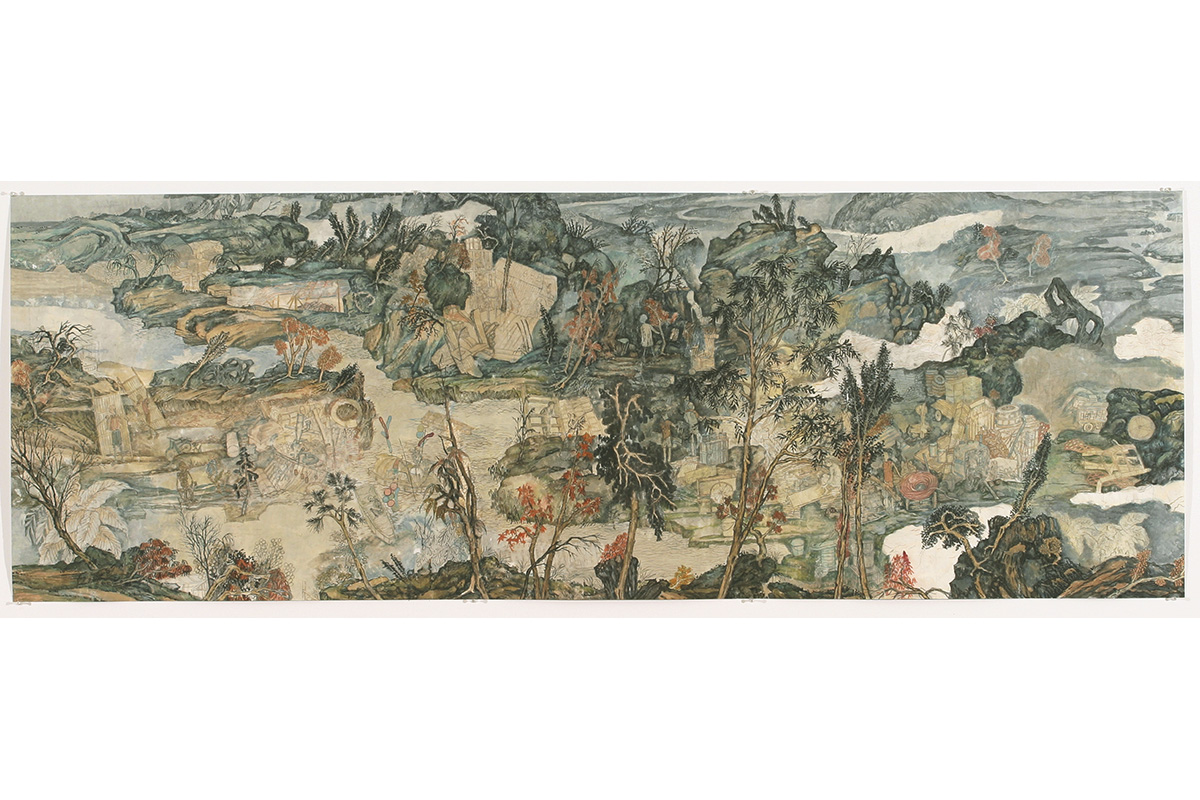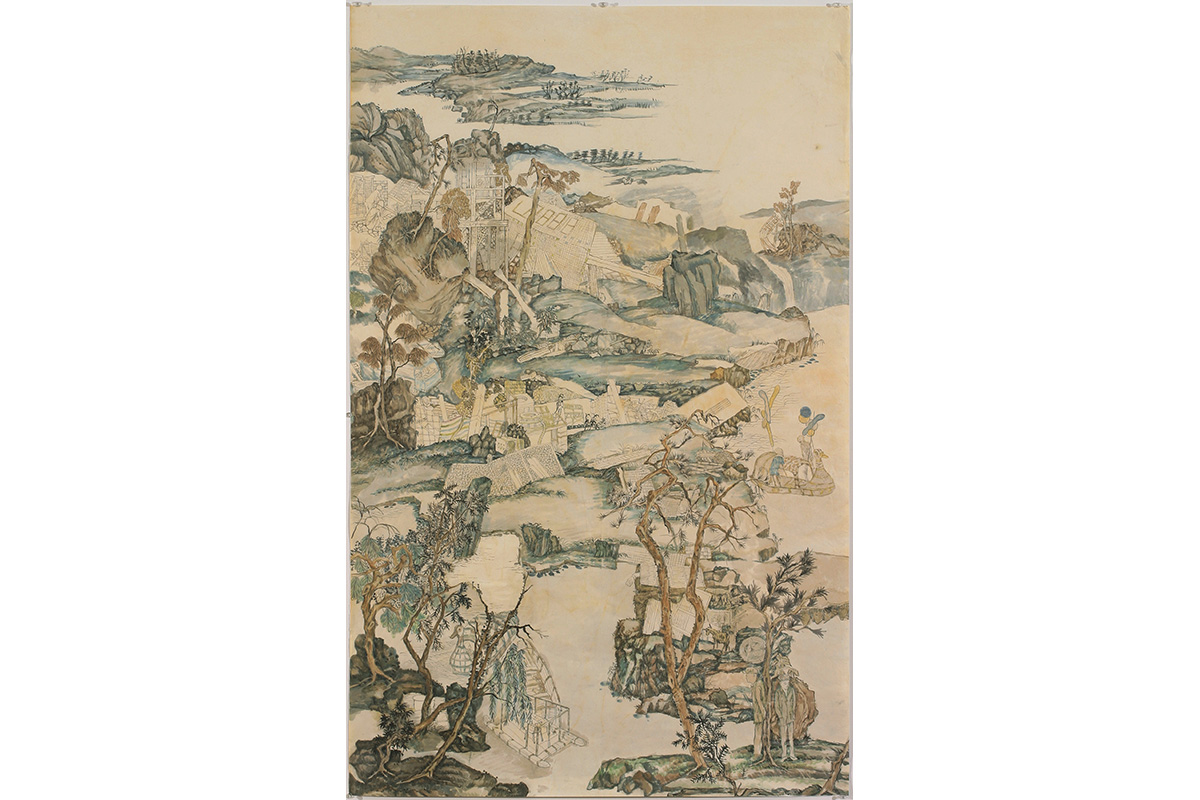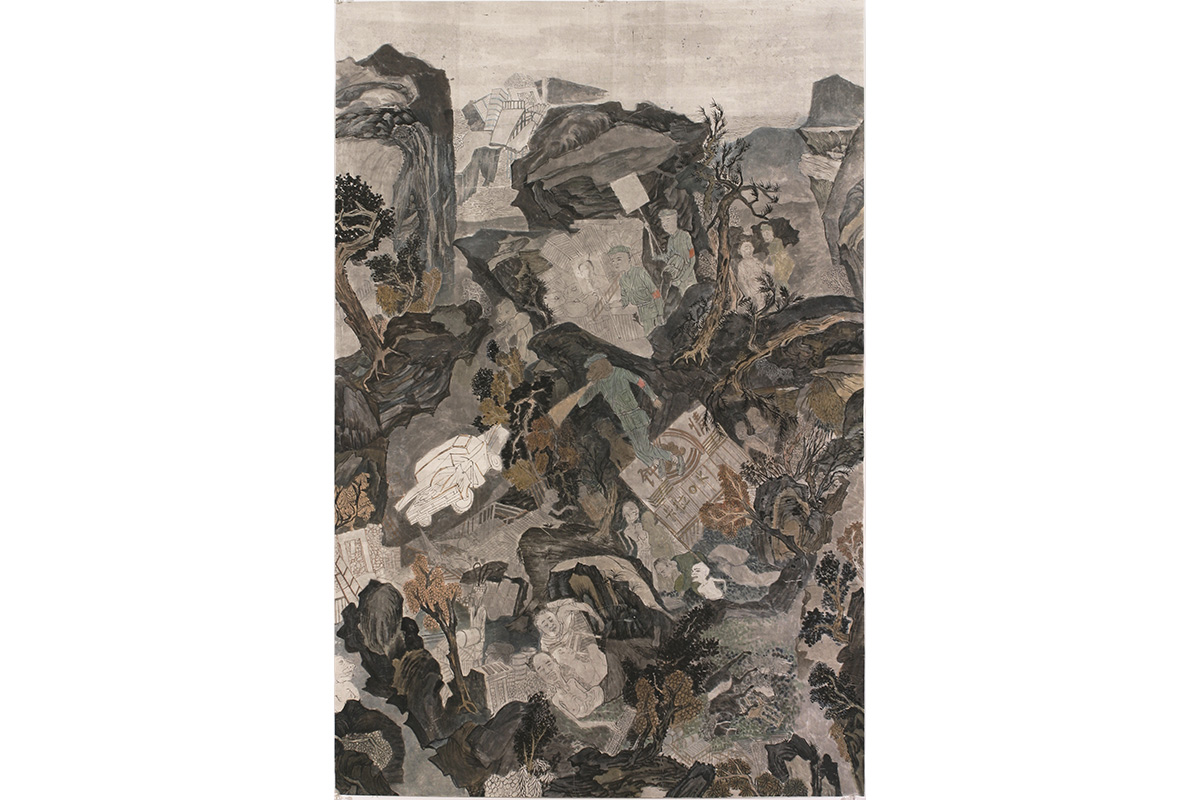In his first solo museum exhibition, artist Yun-Fei Ji shares his long-time interest in the social, political, and environmental affects occurring in China due to the construction of the world’s largest dam, Three Gorges Dam. Ji presents The Empty City, a series of eight related landscapes painted on rice paper with mineral inks. Each landscape depicts autumn to signify the end of a life cycle. For his exhibition at the Contemporary Art Museum St. Louis, Ji has created new paintings that reflect his interest in how the construction of the Three Gorges Dam affects the people who live in the Yangtze River region. His paintings portray an almost prophetic view of what hundreds of thousands of people in the Yangtze River region will face.
While his landscapes are influenced by his Chinese predecessors, they also depart from traditional methods in a number of ways. First, Ji plays with our perceptions of space and scale, giving his landscapes a surreal, disconnected quality. Second, instead of the spatial depth achieved by the Sung Dynasty landscape painters, Ji’s overloaded scenes and nonsensical space/time relationships seem to push the picture plane into the viewers’ space. Third, Ji populates his landscapes with disproportionate, mythical, political, and historical figures that create enigmatic and fascinating narratives. Fitzgerald adds “While The Empty City is about the possible fate of thousands of people in China, these new pieces make you contemplate each individual’s place and position between the past and present, between nature and the man-made, and most of all- within contemporary global culture.”
The exhibition tours to Pierogi Gallery, Brooklyn (April 23–May 24, 2004); Provisions Library, GAEA Foundation, Washington, D.C. (June 4–August 15, 2004); The Rose Art Museum, Brandeis University, Waltham, MA (September 9–December 12, 2004); and Richard E. Peeler Art Center, DePauw University, Greencastle, IN (February 2–April 17, 2005).


